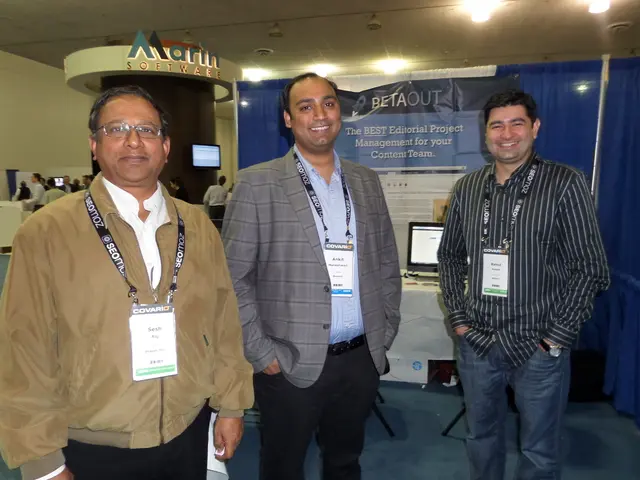Benefits and Drawbacks of Fog Computing: A Closer Look at Distributed Data Processing Technology
Fog computing, also known as fog networking or fogging, is a nifty approach to decentralized computing that brings storage and data processing closer to the edge of a network, right where the data is generated. This is in stark contrast to traditional cloud computing, where the majority of processing and storage happens in big centralized data centers.
Fog computing is all about efficiency and data handling, especially considering the surge of IoT devices across various sectors, leading to an overwhelming amount of data daily. Traditional cloud computation might struggle with the latency, volume, and bandwidth requirements of such a massive data load. Fog computing steps up to the plate, adeptly handling enormous amounts of data and improving the overall performance.
So, what's the hype about? Well, here are some reasons why fog computing could be your new best friend:
1. Slashing Latency
Fog computing excels at reducing latency when dealing with a significant data volume. Since nodes are closer to end devices in this setup, the distance data has to travel is minimal. Result? Quicker response times and an enhanced user experience. Hence, fog computing proves to be the perfect remedy for those pesky latency problems in data processing.
2. Boosting Bandwidth
Fog computing is highly regarded for its enhanced bandwidth capabilities. It manages to reduce network congestion and raises the overall bandwidth by moving data processing and storage closer to the edge. By distributing processing and storage across multiple fog nodes, latency is reduced, and reliability is increased.
3. Reliability Rocks
Fog computing isn't just reliable; it ensures data access even in the face of network failures or infrastructure issues. Redundancy and fault tolerance are its reliable friends, ensuring the availability of data and services. Hence, fog computing makes a solid choice when it comes to data storage and processing.
4. Real-time Applications
Fog computing is a go-to choice for real-time applications like IoT, augmented reality (AR), virtual reality (VR), and autonomous vehicles due to its low latency and reduced bandwidth consumption.
5. Enhanced Security and Privacy
With fog computing, data stays local, minimizing the need to transmit it over a network. This helps in securing sensitive data and lowering infrastructure and energy expenses by offloading processing duties from centralized data centers.
However, fog computing isn't perfect. It comes with its own set of disadvantages, such as complexity in architecture, integration, and cost, as well as security concerns related to the increased number of devices and data processed locally. It is essential to carefully plan, implement, and manage fog computing networks to maximize its benefits.
When it comes to implementing fog computing, there are several factors to consider, both technical and operational. Technical factors include network latency, bandwidth, choosing compatible hardware and software, security measures, interoperability, and scalability. Operational factors include management tools, cost, reliability, integration, adhering to data privacy and compliance regulations, and energy efficiency.
Fog computing is a game-changer in the world of AR/VR and autonomous vehicles, offering low latency processing, edge-centric data processing, and enhanced realism for immersive experiences. Autonomous vehicles benefit from fog computing's real-time data processing, low latency decision-making, and facilitated communication between vehicles and infrastructure for improved safety and efficiency.
In a nutshell, fog computing is a fabulous decentralized computing model that promotes efficiency, minimizes latency, and enhances security by storing and processing data near the devices generating it. It has several advantages, including proximity, real-time application, enhanced bandwidth, reliability, and enhanced security. But it also has some disadvantages in terms of complexity, scalability, and cost. It's a marvelous tech, but it's crucial to manage it properly to maximize its benefits.
Sources:[1] https://www.techrepublic.com/article/what-is-fog-computing[2] https://www.ibm.com/topics/fog-computing[3] https://www.forbes.com/sites/insights/2019/03/28/fog-computing-makes-edge-computing-a-reality/?sh=71615e6468e2[4] https://www.gartner.com/en/information-tech/glossary/fog-computing
Coding in a fog computing environment can greatly benefit from the improved performance and reduced latency, as it allows for real-time processing of vast amounts of data generated by IoT devices. This technology plays a significant role in the development of data-and-cloud-computing solutions, particularly those designed for real-time applications like augmented reality (AR), virtual reality (VR), and autonomous vehicles.




